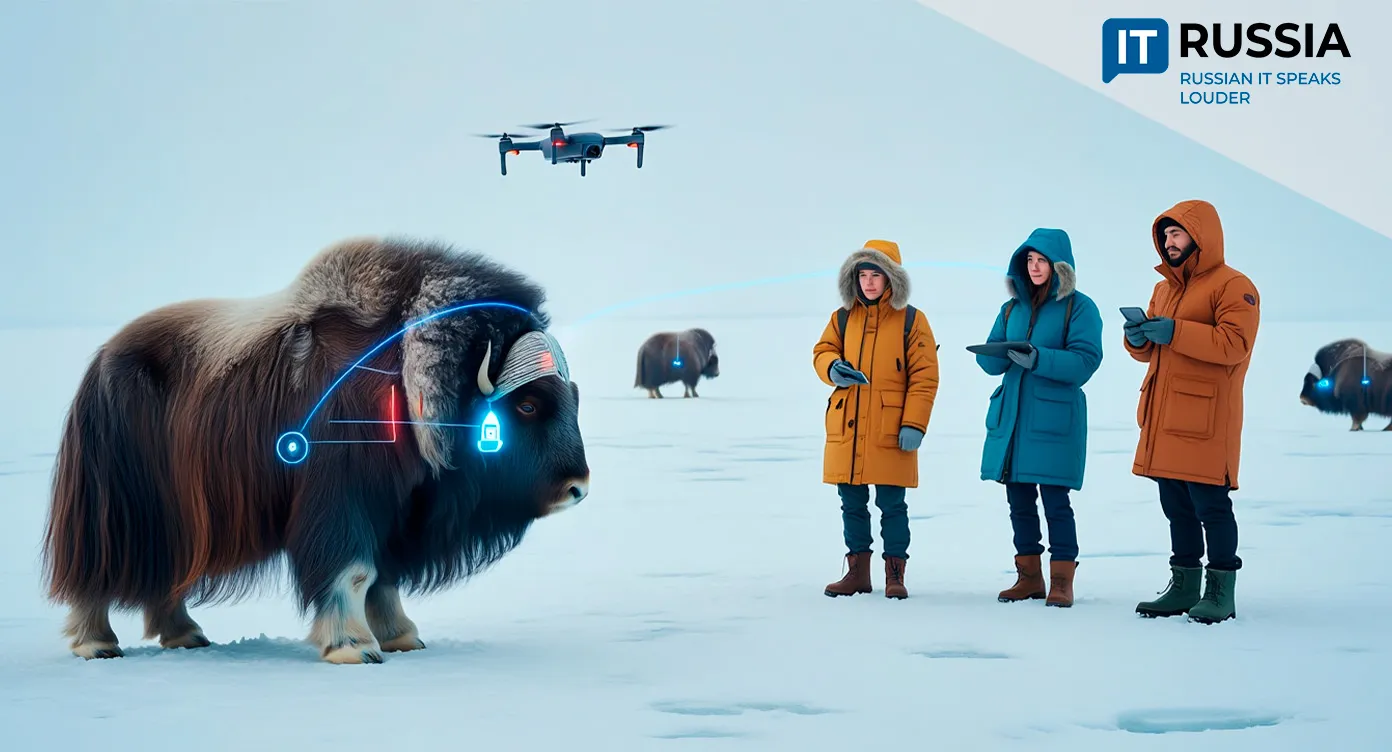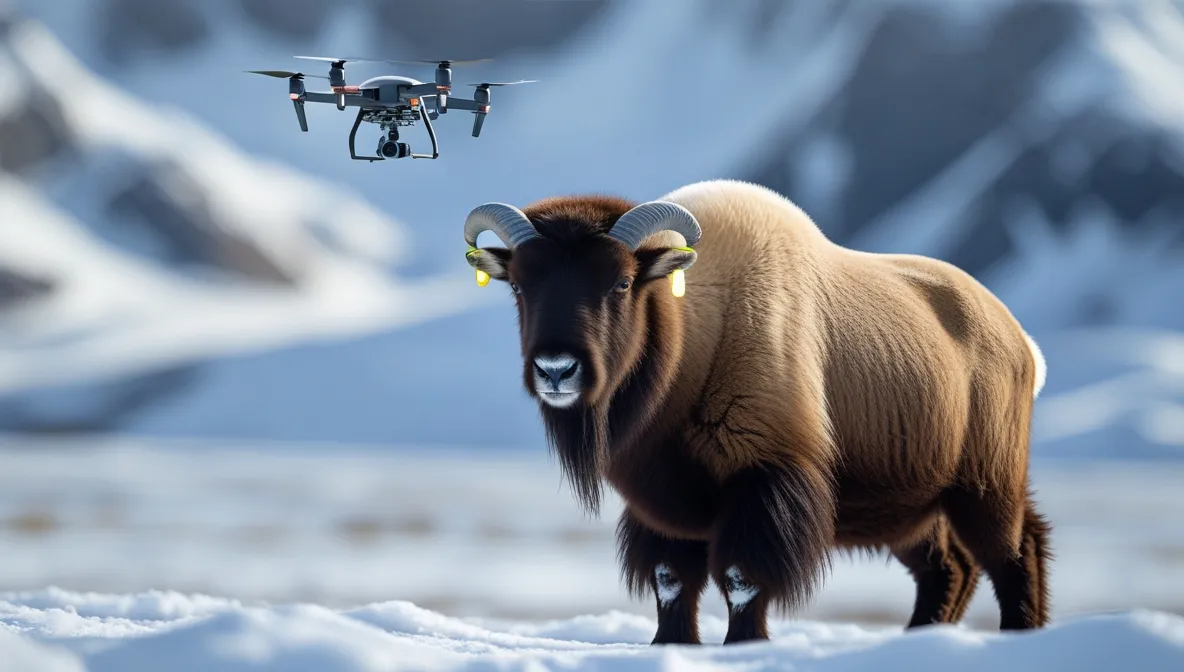Digital Passports for Ice Age Survivors: Tracking Musk Oxen in the Yamal Tundra
In Russia’s remote Yamal-Nenets Autonomous Okrug, scientists are carrying out a high-tech wildlife census. In the Ingilor Nature Park, amid Arctic winds and permafrost, researchers are equipping musk oxen — creatures that once roamed the tundra alongside mammoths — with electronic ID tags, giving each animal a ‘digital passport.’

Counting to Conserve
Ingilor Nature Park is the world’s largest musk ox sanctuary, covering more than 900,000 hectares. For two decades, this reserve has been breeding and reintroducing the Ice Age giants to the wild.
Today, over 120 musk oxen live within the park’s enclosures, and around 80 have been released into the wild in the past five years. Experts estimate that more than 200 animals now roam freely across Yamal.

To maintain accurate breeding records, scientists have begun using electronic identification — a first for this Arctic species. Using domestically produced RFID ear tags known as 'Silflex 3D-A,' researchers are digitally cataloging each animal for genetic and behavioral monitoring.
Precision Through Technology
The project, launched by the Severtsov Institute of Ecology and Evolution and the Institute of Plant and Animal Ecology (both part of the Russian Academy of Sciences), is supported by the Yamal regional government and the Russian Center for Arctic Development.
This is more than a scientific experiment — it’s a glimpse of how digital technology is transforming environmental monitoring even in the most remote ecosystems.
Each 'Silflex 3D-A' tag functions like a mini barcode that can be scanned remotely, even from drones, allowing scientists to gather data without disturbing the animals. The tags record individual movements and herd dynamics with remarkable precision.

Future iterations could evolve into multifunctional sensors capable of tracking health indicators such as body temperature, pulse, and activity levels, while transmitting data via satellite. This would enable the creation of comprehensive 'digital population' platforms for long-term ecosystem management.
The Rise of ‘Digital Nature’
Scientists have been using satellite systems like ARGOS since the late 20th century to track Arctic species — from migratory birds to wild reindeer in Yakutia. Now, RFID technology is becoming the global standard in wildlife monitoring.

The Ingilor project represents a new milestone in this trend, demonstrating how digitalization is reshaping conservation science.
These methods could soon be extended to monitor other rare Arctic and Siberian species, such as reindeer and polar bears.
By integrating information technology into conservation, Russia is contributing to a global shift where digital tools support biodiversity protection, opening a new chapter in how humans coexist with nature.










































